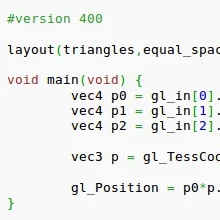The Disturbing Results With Automated Fuzzing Of OpenGL Shaders

Alastair Donaldson and others at the Imperial College London have finished their work into automated testing of shaders. Their work into detecting shader defects has uncovered more than 60 distinct bugs. They explain, "Our experiments over a set of 17 GPU and driver configurations, spanning the main 7 GPU designers, have led to us finding and reporting more than 60 distinct bugs, covering all tested configurations. As well as defective rendering, these issues identify security-critical vulnerabilities that affect WebGL, including a significant remote information leak security bug where a malicious web page can capture the contents of other browser tabs, and a bug whereby visiting a malicious web page can lead to a “blue screen of death” under Windows 10. Our findings show that shader compiler defects are prevalent, and that metamorphic testing provides an effective means for detecting them automatically."
The 29-page paper for those interested in all the exciting technical details can be read at ic.ac.uk. Unfortunately the source to GLFuzz does not appear to be public.
39 Comments

